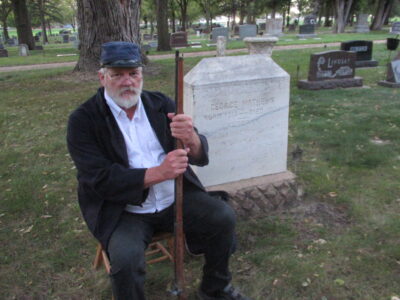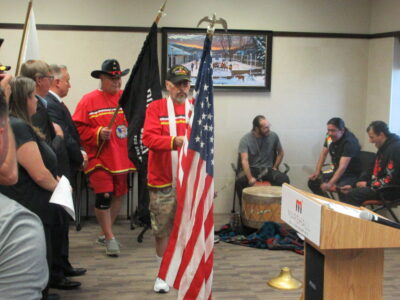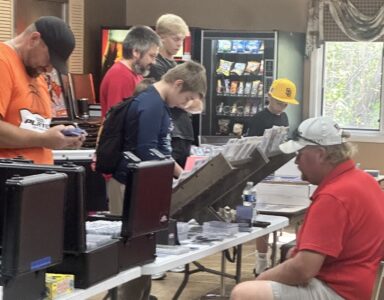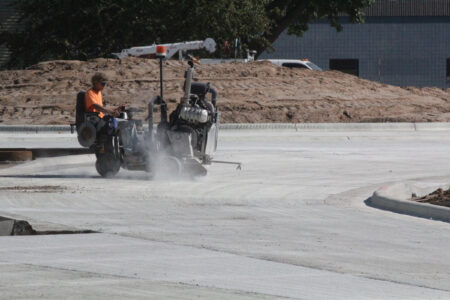Behind the headstones
Author and actors come together for Marshall cemetery walk
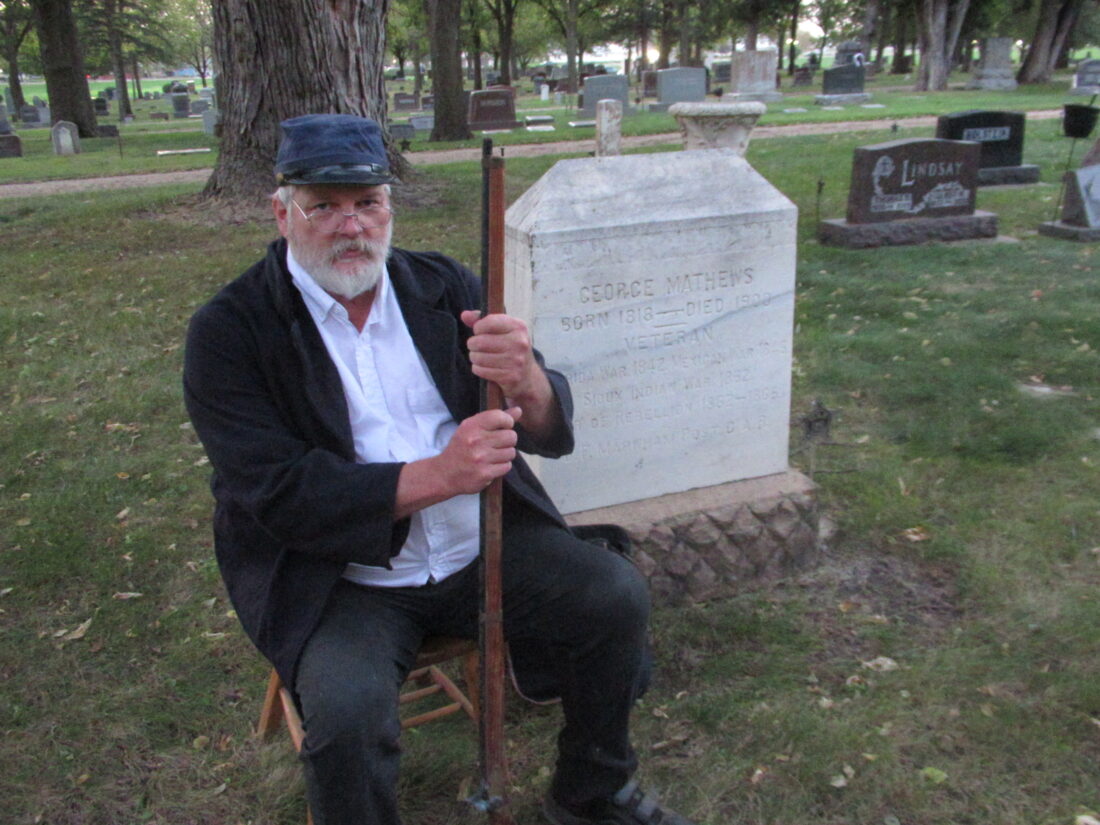
Daryl Hrdlicka dressed in a Civil War uniform to portray Union veteran George Mathews, during a cemetery walk at the Marshall Cemetery on Saturday evening.
MARSHALL — It was a moonlit night, and figures could be seen standing among the headstones at the Marshall Cemetery. But it wasn’t a haunting. Area residents had come to the cemetery to share the stories of notable historical figures buried in Marshall.
“I’ve done cemetery walks before,” said Westbrook resident Daryl Hrdlicka, who was portraying Civil War veteran George Mathews. Cemetery walks were a unique way to do theater, he said. “I like the history.”
On Saturday, an audience of more than 60 people came to the Marshall-Lyon County Library to hear a talk by author Adrian Lee, followed by a walk through the Marshall Cemetery. The Marshall Area Stage Company got into character, acting out short monologues about the lives of past Marshall residents.
Maureen Keimig, with MASC, said the idea to do a cemetery walk was something that she had wanted to do for a long time. “I used to go for walks here, and I noticed these interesting tombstones,” she said.
The chance to actually do a walk came up after meeting Lee, a historian, paranormal expert and author of “Mysterious Minnesota.”
Lee started out the evening at the library, talking about some of the historical sites he had investigated in southern Minnesota. Those sites included the Loon Lake pioneer cemetery near Jackson, Minn. A local legend said a witch had been buried in the cemetery, Lee said. The story had even inspired the song “Mary Jane” by the band Megadeth.
“I wanted to prove, as a historian, why the legends exist,” Lee said.
Historical records said the real Mary Jane, Mary Jane Terwilligar, was actually a housemaid who died of diphtheria in the 1880s. Some people had interpreted a carving on Terwilligar’s gravestone as a curse, Lee said. But the “curse” was actually a well-known poem, that could have come on a pre-made gravestone, he said.
In areas of Minnesota that didn’t have stone quarries, people had to send away for gravestones, Lee said. “If somebody died, you would go to the Sears and Roebuck catalog,” and order a monument, he said.
Later, during the cemetery walk, Lee also shared some of his knowledge about the symbolism used on the different gravestone carvings at the Marshall Cemetery. Laurel leaves represented immortality, he said. Headstones carved with lambs could represent childhood innocence, but sometimes they were used on adults’ graves too, he said.
The actors on the cemetery walk portrayed a few different people from local history, from women’s suffrage advocate Minnie Mathews, to Harriet Tucker, one of the founders of the Institute for the Blind at Faribault.
Jan Mason said there was a challenge to portraying a real person.
“We tried to use the language that (the characters) would have used at that time,” Mason said. Mason was telling the story of Anna Nelson, a mother who lost five children in the space of two months, during a scarlet fever outbreak in 1882. It was an intense role to play.
“You just want to get it right, the emotions and what they were feeling,” Mason said.

